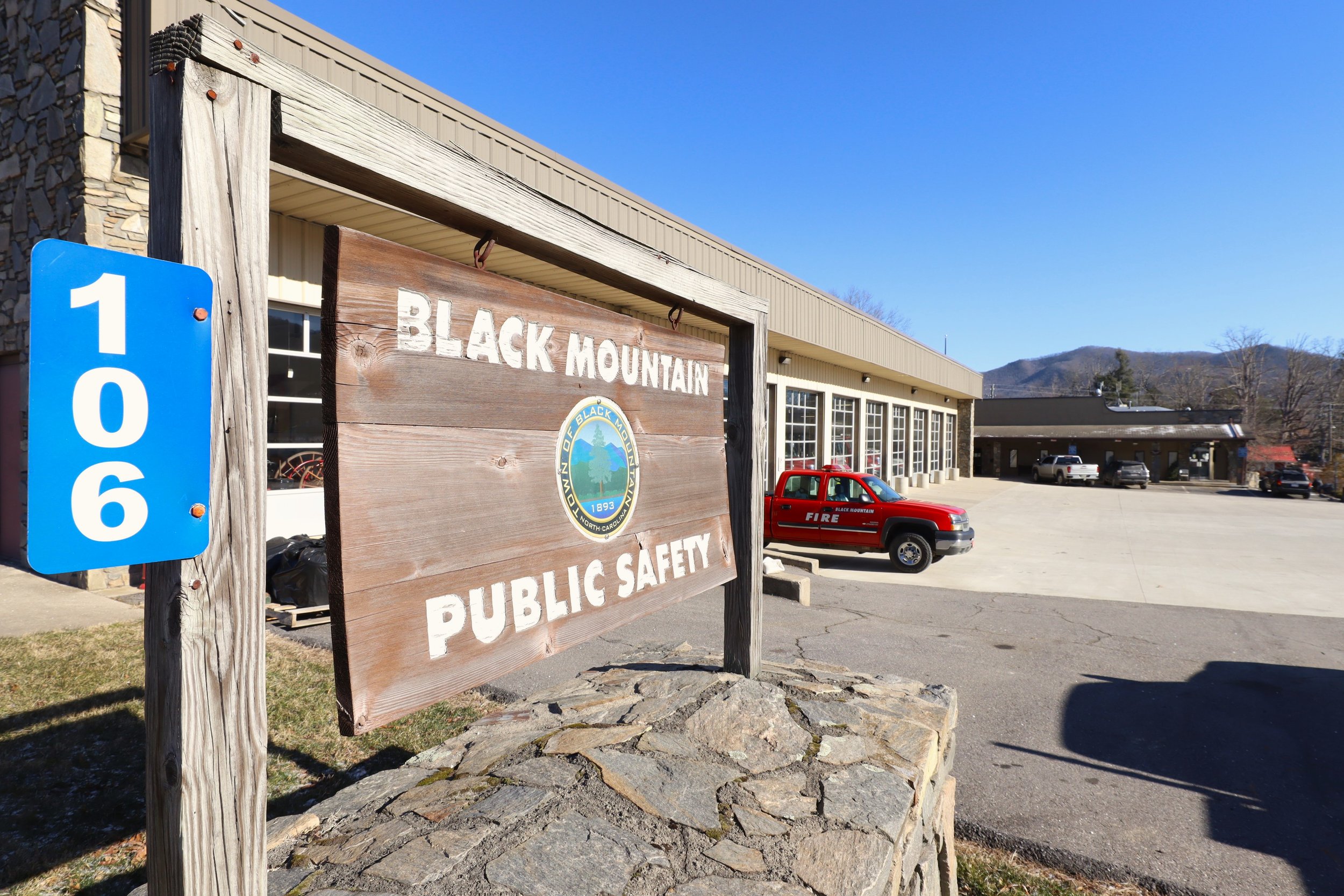Storm recovery comes into focus for Town of Black Mountain
‘Tough decisions’ ahead as local officials navigate complex process of federal assistance
Fred McCormick
The Valley Echo
January 20, 2025
The Town of Black Mountain will seek at least $2 million in public assistance funding from FEMA to repair and improve the public safety building. The project is one of 33 presented, Jan. 13, to the town council. Photo by Fred McCormick
A lengthy and complex process to secure funding needed to rebuild crucial infrastructure in the Town of Black Mountain, following Tropical Storm Helene, was presented, Jan. 13, as the town council held its regular monthly meeting.
Representatives from disaster management firm IEM, contracted last November to guide the town through the FEMA Public Assistance program, provided elected officials with an overview of the recovery plan and preliminary estimate of damages.
An overview from disaster recovery specialist Mike Cheverie and disaster recovery consultant Willie Washington outlined an arduous undertaking.
Described as “very preliminary,” the firm has estimated damage totaling approximately $13 million. That number could change before the Monday, Feb. 17 deadline to submit a final damage inventory, according to Washington.
“We’re getting all of the documentation together to submit to FEMA, but as of right now, over the past two months, this is what we have now,” he said. “We don’t expect the number to go up or down, drastically, but we do expect it to fluctuate between $1 million or $2 million.”
Cheverie told the town council to expect a prolonged multi-step reimbursement procedure, requiring significant documentation before the municipality receives funding.
“It’s going to take a while,” he said. “It could take up to a year, at least, but I don’t want to put timeframes on it because it is a long process.”
Approximately 33 projects representing eight categories will need to be completed, according to the preliminary finding. The town will seek reimbursement for debris removal; emergency protective measures; roads and bridges; water facilities; public buildings and contents and parks and recreation facilities.
A project application for $2 million to improve the public safety building, which houses the police and fire departments, is one of four alternate projects that includes $200,000 for a new golf course maintenance structure, $1 million to rebuild the public works and recreation and parks building and $1 million for the police shooting range.
Many of the projects will require the town to fund them before receiving reimbursement.
“You don’t have to find all $13 million, but you will find a lot of that money,” Washington said. “Different projects and different processes will give you some money up front. Some require you to pay for half to get started, then receive funding for the second half, and then reimburse the first half once completed.”
Identifying funding sources to allow the town to begin rebuilding will be a top priority for the town council in the budgeting process for the 2025-26 fiscal year, which begins when the board meets, Saturday, March 1, for its annual budget retreat, Town Manager Josh Harrold said in an interview after the IEM presentation.
“From a town standpoint, a lot of the funding that is becoming available isn’t going to do a lot for us,” he said. “That money is usually for counties or larger cities. We still have a lot of unanswered questions about how we’re going to do this.”
Local officials will need to have “serious conversations” about available funding, Harrold added.
Preliminary estimates from disaster management firm IEM indicate the Town of Black Mountain suffered $13 million in damages to infrastructure and equipment during Tropical Storm Helene. Photo by Fred McCormick
The town entered the current fiscal year with an unassigned fund balance, representing money remaining after accounting for general fund expenditures, of approximately $5 million. That total accounted for 54% of general fund expenditures, well above the state’s requirement of 8% and the town’s policy of 30%.
Last October, the town council allocated $2 million from the unassigned fund balance to support emergency operations related to the natural disaster.
“That will come back to the town, but we don’t know when,” Harrold said. “Hopefully, it will be sooner than later, but we just don’t have a timeline for it.”
Available funding can be used to begin the work, according to the town manager.
“We have an internal policy that we keep our unassigned balance at 30% of expenditures, and we can lower that for however long we need to, then build it back up, of course,” he said. “We’re just going to have to think about how to make things happen and what kind of timeframe town council is comfortable with.”
Town staff is exploring the possibility of bridge loans to fill gaps, according to Harrold.
“Talking to the legislators, we’re telling them what we really need as towns in this area is bridge money,” he said. “We need loans to get us through until we get repaid through FEMA. Nobody in this area has the money to deal with these damages up front.”
Elected leaders will be tasked with establishing priorities and potential methods of funding when discussing the upcoming budget.
“We have some tough decisions ahead of us,” Harrold said. “Our water system is always a top priority, and making sure our system is resilient as possible is obviously so important. We have some roads around town right now that are in bad shape, and some of those repairs will pricey. From my perspective, maintaining the services we provide is the most important thing to me right now.”


